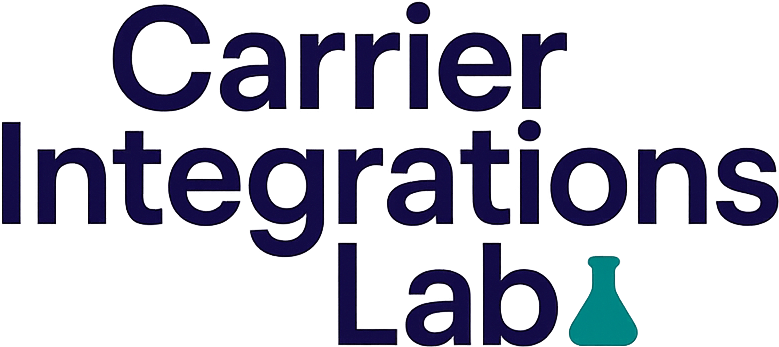CAMARA's Standardization Promise vs Reality: Why 80% of Carrier API Implementations Still Struggle in Production

CAMARA project, an open source community addressing telco industry API interoperability, announced the third meta release of its stable, production-ready Network APIs in October 2025, positioning itself as a solution to decades of fragmented carrier integrations. The project has grown to 1300+ contributors among 476 organizations, with 45 sandbox API repositories, 15 incubating API repositories, 60 released APIs, and five working groups, showing impressive momentum.
The promise is attractive: build-once, deploy-everywhere portability across networks and countries—reducing rework, preventing fragmentation, and accelerating the rollout. For developers, CAMARA API implementation appears straightforward with its standardized RESTful APIs that are familiar and easy to implement, offering abstraction of complexity so developers interact with clean interfaces without dealing with underlying network intricacies, and providing cross-operator consistency where a single integration works across multiple operators.
Where the Dream Meets Reality
Here's what the documentation doesn't tell you: for mobile operators, southbound integration—connecting APIs to the core network, OSS, and BSS systems—is anything but simple. The clean RESTful interface you see represents only the tip of a massive integration iceberg.
The southbound CAMARA API integration requires significant effort to align APIs with complex telecom infrastructures. Telecom networks feature specialized architectures and diverse components (e.g., EPC, 5GC, OSS, BSS). CAMARA APIs often require data from multiple systems, necessitating harmonization. This isn't your typical web service integration.
Think about it: when a SIM Swap API call comes in, the carrier needs to query multiple backend systems simultaneously. To fulfill CAMARA API requests, operators may need to implement additional logic that performs lookups across multiple data sources. Ensuring compliance and maintaining performance SLAs add layers of complexity.
The Infrastructure Alignment Challenge
The bigger problem? Many operators rely on outdated systems that require specialized integration through legacy interfaces to avoid the complexity and cost of upgrading to support modern APIs. You're not just building an API wrapper—you're bridging decades of telecommunications infrastructure evolution.
Consider a typical European carrier running SAP for BSS, Nokia for network orchestration, Ericsson for core network functions, and custom-built OSS systems. Each system speaks a different protocol, has different authentication mechanisms, and operates on different update cycles. CAMARA's standardized interface must somehow unify all these disparate data sources while maintaining sub-second response times.
APIs must meet stringent uptime requirements (e.g., 99.999% availability) to support critical services such as banking authentication. Frequent or prolonged outages could damage enterprise trust and negatively impact the customer experience. Operators must ensure reliability, redundancy, and rapid fault resolution.
Production War Stories: When Standards Meet Reality
From our testing lab, here's what breaks first in CAMARA implementations. Authentication flows fail spectacularly when backend systems have different token lifetimes. We've seen Number Verification APIs timeout because the operator's HLR lookup takes 8 seconds, while the API promises 2-second responses.
Rate limiting becomes a nightmare with multiple backend dependencies. The CAMARA API might allow 1000 requests per minute, but the underlying BSS system chokes at 50. Traditional operator turnaround times for launching market-facing initiatives are often too slow to meet these expectations.
Version control presents another challenge. New API versions should be introduced without disrupting existing integrations. Operators need mechanisms to track, manage, and maintain multiple API versions. When your backend systems are on different upgrade cycles, maintaining backward compatibility becomes exponentially complex.
The Economics Don't Add Up (Yet)
Let's talk numbers. Implementing a full CAMARA-compliant API gateway with proper southbound integration typically costs €500,000-2M for a mid-sized European carrier. This includes middleware platforms, system integrations, testing infrastructure, and 12-18 months of development time.
The ROI timeline? Most carriers we've analyzed need 3-5 years to break even, assuming they capture significant API revenue. But creating API standards is great for interoperability and unlocking closed platforms but does not necessarily deliver a money-printing machine. APIs need a commercial imperative to be successful. API standards only grease the wheels of commerce. It takes delivering something people want through the products and services built on top of them to unlock the real value.
Building Resilient CAMARA Implementations
Despite the challenges, successful implementations exist. The key is treating CAMARA as an orchestration layer, not a simple API proxy. Operators need robust middleware solutions. These platforms can harmonize data across silos, and support critical features such as version control, high availability, authentication, and observability.
Integration platforms like Cargoson, alongside providers like MercuryGate and nShift, have started offering CAMARA-adjacent capabilities for unified carrier integrations. These platforms abstract the complexity while providing the reliability carriers need.
Our recommendations for operators considering CAMARA implementation:
- Start with sandbox implementations to understand southbound complexity
- Invest in robust middleware before attempting direct backend integrations
- Plan for 18-month implementation timelines with dedicated integration teams
- Implement comprehensive monitoring from day one—API observability is critical
- Build fallback mechanisms for every backend dependency
The Path Forward
CAMARA API standardization will eventually deliver on its promises, but we're still 2-3 years away from plug-and-play implementations. Implementing network APIs has had limited success for many reasons, from the network operators' fears of changing market dynamics and disruption to continued rapid product development.
The carriers that succeed will treat standardization as a multi-year infrastructure investment, not a quick API deployment. They'll build robust middleware layers, invest in proper testing infrastructure, and plan for the long-term operational costs of maintaining complex integrations.
For enterprises looking to integrate with CAMARA APIs, expect significant implementation variance across carriers through 2026. The standardized interface is real, but the backend infrastructure complexity means different operators will have different reliability profiles, latency characteristics, and feature completeness.
CAMARA represents genuine progress toward carrier API standardization. But understanding the gap between standardized interfaces and production-ready implementations is the difference between a successful integration and a failed project. Plan accordingly.




